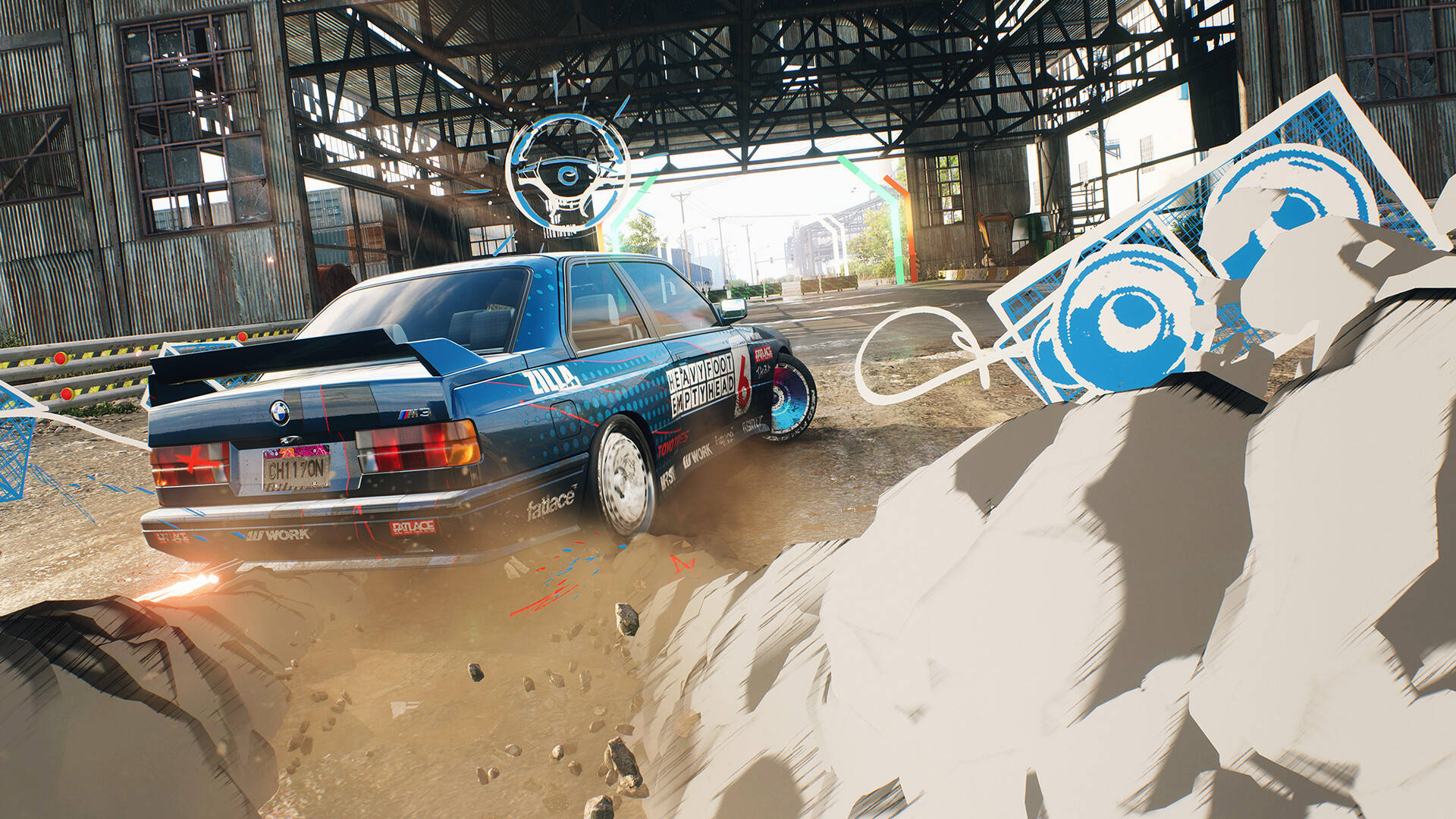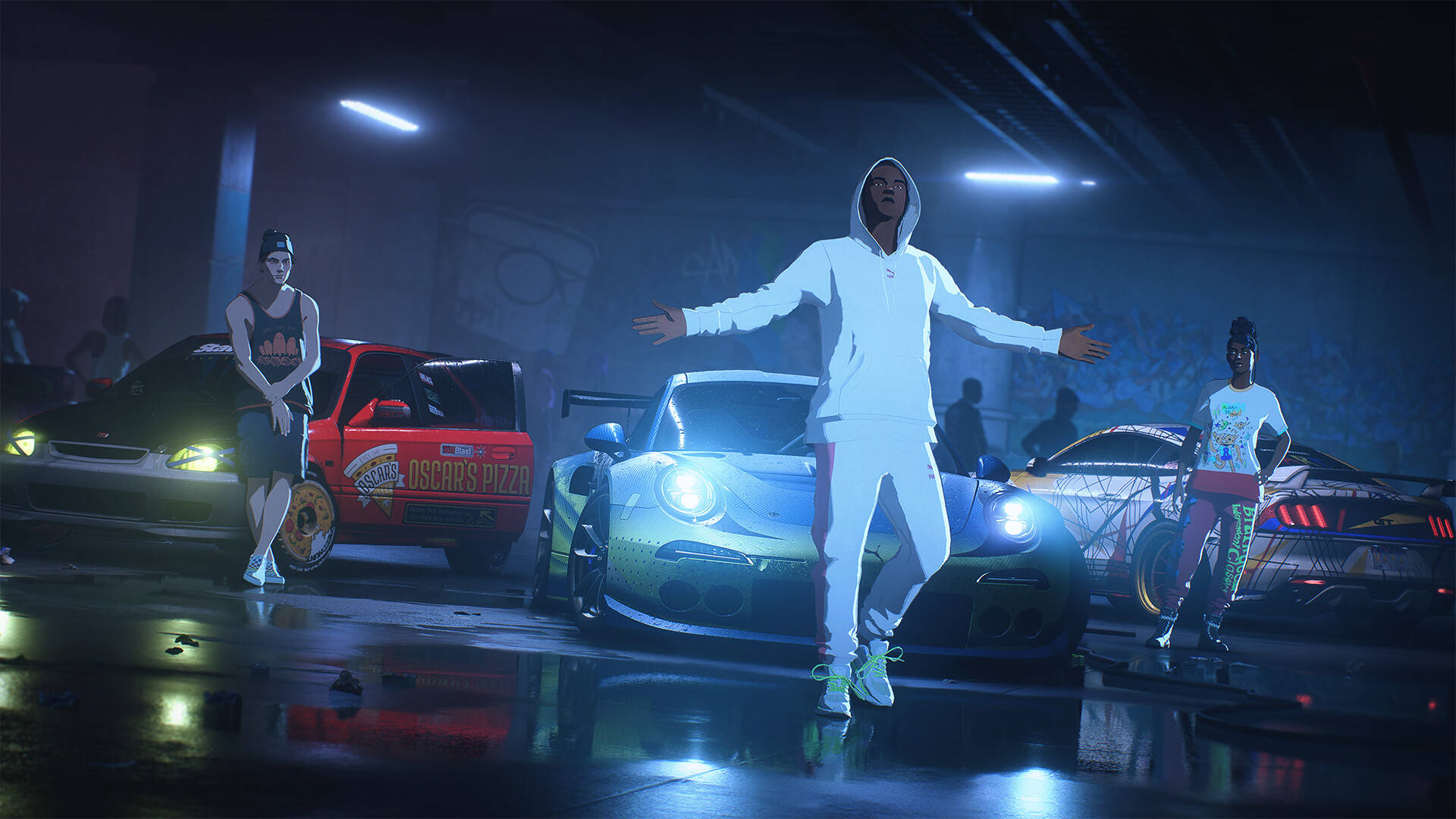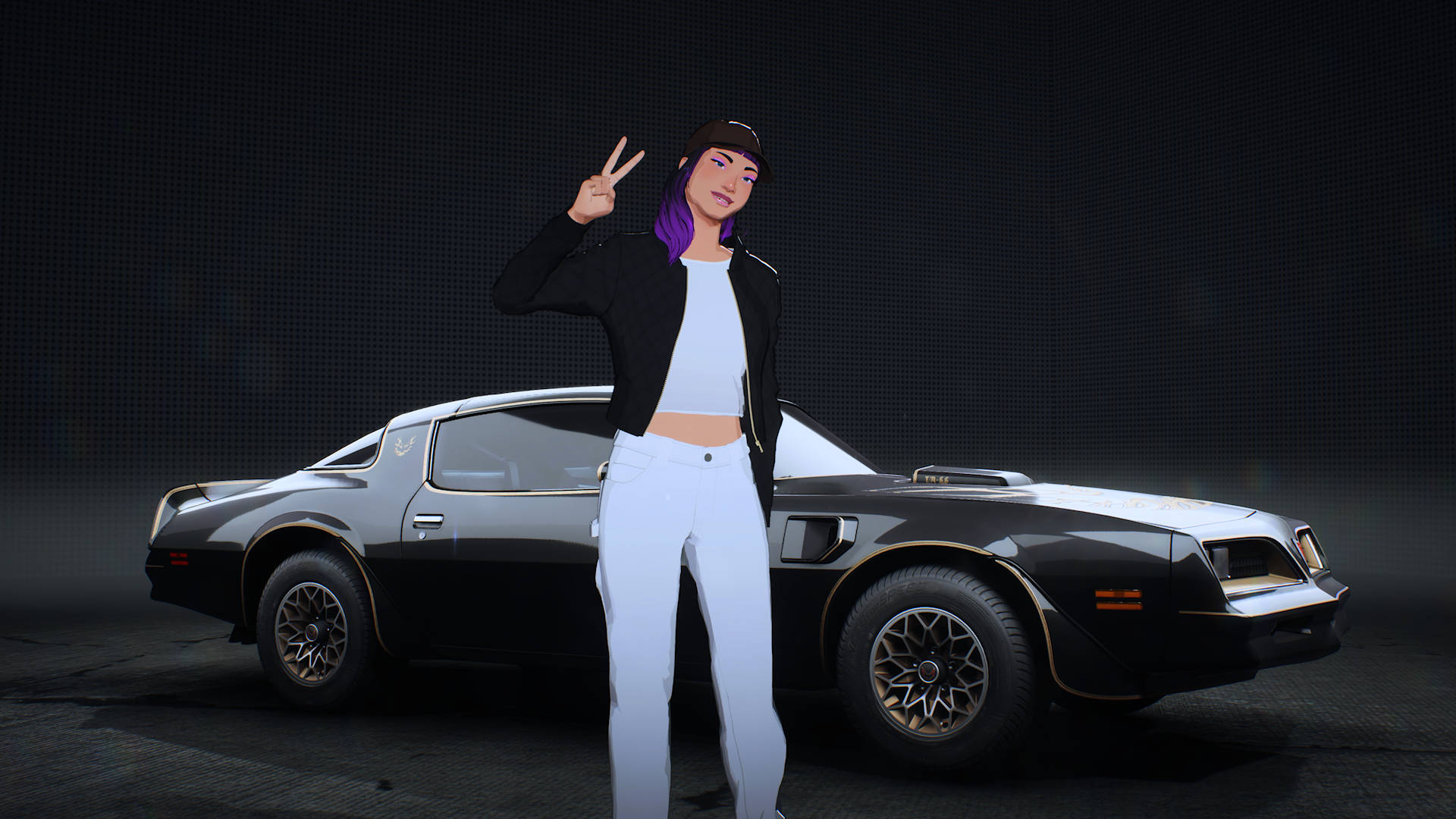Need for Speed: Unbound Impressions
In the entirety of my time here at EGM, I’m not sure that I’ve ever written any personal impressions on a racing game. It’s not that I don’t like games of that type, more that—outside of my strange love for the subgenre of top-down racers—my tastes tend to be pretty random. I’ve long had a fondness for Sega arcade classics like Outrun and Power Drift, I adore some (but not all) of the Ridge Racer games, and I’ll find the occasional other release to become infatuated with, such as Evolution Studios’ ill-fated DriveClub, the Dreamcast motorcycle racing title Suzuki Alstare Extreme Racing, or Need for Speed III: Hot Pursuit on the original PlayStation.
That last game still holds a special place in my heart to this day. It was a near-perfect mix of more casual-friendly controls, tracks that were beautiful yet interesting in design, and fun gimmicks like having to avoid getting pulled over by the cops. While the Need for Speed series has produced 25 games across nearly 30 years, Hot Pursuit was the only time one of those games really grabbed my attention enough to pull me in.
Well, until now. Need for Speed: Unbound is a somewhat weird new release in EA’s long-running racing franchise, and not just because of its unique visual style. Even though this is a major new Need for Speed chapter from one of the masters of the genre, Criterion Games, we only (officially) found out about its existence less than two months ago, and its launch almost feels like an afterthought from a marketing and hype perspective.
Normally, that would give me extra reason to just ignore the game, but something about Unboundhas felt different from the moment I first saw it. If you’ve noticed the game at all, then it’s no doubt due to the graphical style the team has given it, which I’ve seen explained as everything from “comic” to “anime” to “street” to “kinda like Spider-Man: Into the Spider-Verse.” Unbound’s looks certainly played a big factor in why I gave it a go, as I both appreciate it when games try something new with their visuals, and what Criterion has gone for here reminds me more than a little of Capcom’s gorgeous (but not always enjoyable) Auto Modellista.
At the same time, I’m both impressed and a little disappointed by Need for Speed: Unbound’s graphical style. When it works, it’s really cool. All of the cars that I’ve tried out look great in how they’re rendered here, bringing new life to vehicles we may have already seen countless times in other games. I quite like how the story’s characters are depicted as well, brought to life in a style that feels familiar yet not exactly like anything else I’ve seen before. I even genuinely like the crazy effects used when doing things like popping nitrous, making a particularly big jump, or drifting around a tight curve. Should you want to, you can tone down those effects, but I’ve never thought once about doing so, as they help add to an overall style and atmosphere that I’ve come to really enjoy.
In fact, if I’ve got any complaint about how Need for Speed: Unbound looks, it’s that I don’t think the team went far enough. When you’re out driving around the fictional city of Lakeshore, I think everything really looks good—but also a little boring. I have zero complaints with what Criterion has built here on a technical level, and in any other game, this would be a beautiful city to spend time in. However, when compared to the extra flair that elements like cars and characters get, I wish they could have pushed things farther. I mean, I get it: There’s a wide gap between a vehicle looking more like animation and doing that for an entire landscape full of hundreds of thousands of different objects. Still, your surroundings can at times feel a bit flat compared to your ride or yourself.
That last element, the game’s characters, are my one other complaint about Unbound’s visual style. Basically, we don’t see enough of them. There’s a lot of dialog that unfolds during the story mode, and yet so much of it is between disembodied voices. When I’m hanging out at my home base of Rydell’s Rydes, and I overhear a conversation between my father figure Rydell and our financier Tess, why don’t I see them? I’m surprised to hear myself say this, but why aren’t there more cutscenes in my racing game? These models look great and add a lot to the overall atmosphere, so I wish they got more screen time.
Speaking of surprises, while I assumed I’d like Need for Speed: Unbound on a visual level, the rest of the game caught me pretty off guard. I expected, you know, a game about racing, but what I didn’t know was how much the experience builds around risk versus reward. At least throughout what I’ve played of it so far, Unbound unfolds across a series of weekly schedules with a day/night cycle for each day of the week. In order to participate in that weekend’s big race, you need to make sure you’ve got a car that qualifies, which can mean either upgrading one of the rides you’ve already got stashed at Rydell’s garage, or perhaps even having to buy a new one.
Both of those actions require a lot of cold, hard cash, so the bulk of your days focus on heading out to take part in the various events put on by Lakeshore’s underground racing scene. Different opportunities will arise during either the daytime or nighttime, and at any time, you can head back to Rydell’s Rydes to bank the cash you’ve earned (and end that portion of the day). That’s important, because one of the big gameplay elements to Unbound is that as you participate in different events, your heat level rises. The higher it gets, the more the police will be trying to hunt you down. This is a pretty big problem, because should you get caught, any money you’ve got on hand gets confiscated—and the police really want you off the streets.
Even more aggressive than the cops are the other racers themselves. Need for Speed: Unboundprovides a variety of colorful rivals that you’ll come to know throughout the game, and they can be a legitimate threat when it comes time to race, at least in the multiple hours I’ve put into the game so far. I’ve played plenty of racing games where I would gun for a top spot on the rankings right from the start, but the early going in Unbound felt like a real struggle to keep up—which I loved. Even once I got a new car and was able to start putting money into upgrades, there’s still been plenty of times when I’ve been happy coming in around the middle of the pack.
There are a few reasons for this. First off, while some races are totally free to enter, others require a buy-in. So, while earning $2K off of a race that costs $1.5K to enter might not seem like a big win, it at least means that you didn’t lose money on the race. As well, you can place side bets with one of the other racers over who will beat out who, so busting ass to make sure you get that extra $500 from a particular rival can help soften the blow of not ending up on top.
Now, I know what some of you might be saying: Why not just restart the race and keep trying again until you get a better position, or why not use whatever rewind feature the game offers to correct a mistake? As to the latter, there’s no rewind system—and let me tell you, one bad crash can spell disaster. And, in terms of restarting a race, every event I’ve seen so far has limited the amount of times you can try it again. In more generous races, the most I’ve seen is four retries; in the harsher ones, it’s been as low as one, or even none.
Having to balance avoiding the police, not losing any earnings you’ve made, competing against rivals that can easily beat you, having no option for undoing a bad crash, and the risk of coming out of a race with less money than you entered into it with can really make you sweat as a racer—and it’s exhilarating. Every decision I’ve made while playing has had some downside to counterbalance its upside. Sure, that one race is giving big payouts, but if I can’t do well and I’ve got few retries, I could lose a lot of money. I could instead jump into an easy-money race to build my bank account back up, but I’m also going to attract more police attention, so that smaller pot might be more trouble than it’d be worth. A lot of other racing games are good at putting on the pressure while you’re on the track, yet Unbound cranks up that pressure all across the game, adding a dynamic that I’ve not really experienced before in a racing title.
And then, in the biggest twist of all, I’ve found myself becoming surprisingly invested in Need for Speed: Unbound’s story. It’s not anything wildly original, or groundbreaking for a racing game, but it’s a simpler tale that’s been effective at getting me to care about my customized character and her goals for wanting to race. There’s still time for things to go completely off the rails, like Need for Speed: The Run did as it went all Fast & Furious, but I don’t know that I see that coming. This has been a more grounded, more local story so far, and I think that was absolutely the right direction to take.
Just real quick, since I haven’t spent a ton of time with it, Unbound also offers up an online multiplayer mode, which features completely separate progression and car unlocks from the campaign. Once hopping onto a server, you can set up or accept challenges with other players, or simply enjoy some time racing around Lakeshore without any specific goals in mind. The lack of progression crossover does mean that someone who’s spent hours in the campaign will be all of the way back at square one when first starting, but I do understand why the two modes got sectioned off from one another.
I had originally planned to just try out Need for Speed: Unbound for fun and leave it at that, but I ended up feeling compelled to write down some of my thoughts on it. For reasons I’ve already covered and more, I think this game could end up off the radar of a lot of people, especially those (like me) who don’t pay the Need for Speed franchise much attention—and that would be a shame. Even though so many factors of Unbound’s release scream “throwaway gimmick experience,” Criterion has put together some genuinely exciting and enjoyable racing here.
While I’m not sure how the more hardcore racing fans will receive the game, this is the kind of release that’s perfect for those of us who come to those genre entries that offer something that’ll capture our imaginations (and reignite that occasional need for speed). And, if nothing else, Need for Speed: Unbound is available as a 10-hour full-game trial through both EA Play and Xbox Game Pass Ultimate, which is more than enough time to see if the game will do for you what it’s done so far for me.
Summary:
Score: -
was reviewed using review code, physical copies, or hardware provided by . Scores are graded on a scale of E (Bad) to S (Special) in homage to Japanese video game grading scales, with the understanding that an S still does not denote a "perfect" score. Scores may have been adjusted from the original source to better fit my personal scale.




